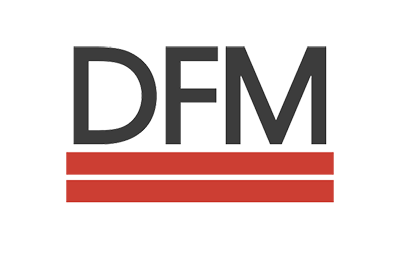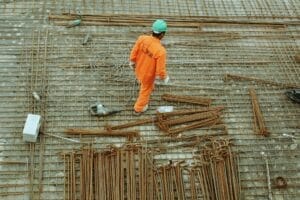Stormwater refers to abnormal quantities of surface water emanating from heavy rainfall or snow. Stormwater poses a considerable threat to the environment when it’s unable to infiltrate into the ground and comes in contact with pollutants, particularly those found in and around construction activities.
A stormwater pollution prevention plan (SWPPP) is a written and signed agreement by a facility’s executive to document a facility or a company’s commitment and strategy to prevent stormwater pollution. A stormwater pollution prevention plan outlines possibilities for water pollution emanating from construction or renovation activities. In addition, an SWPPP highlights the steps and best practices the contractor will take to minimize unpermitted water discharges.
Facilities must first complete the preparation, submittal, and approval of the stormwater management plan to obtain a National Pollutant Discharge Elimination System (NPDES) permit. Any commercial, residential or industrial facility releasing water pollutants into the waters of the United States must first obtain NPDES approval.
The SWPPP plan and documentation help the Environmental Protection Agency protect and safeguard water quality. EPA achieves its mandate by exercising oversight on facilities that discharge polluted water. The Environmental Protection Agency governs and oversees sources of point and nonpoint pollution.
The NPDES and SWPPPs documentation do not apply for discharged pollutants entering sanitary sewer systems. Rather, facilities are required to check with their respective water authorities before discharging pollutants in sanitary systems.
The SWPPP plan outlines proactive measures to prevent pollution. Unfortunately, because even the best equipment, strategies, and plans fail, the SWPPP includes appropriate measures, equipment, and facilities in case of a release.
All stormwater pollution prevention plans must include:
1. Site Descriptions
The site description captures the site activities, procedures, and processes. The site description also captures the facility’s name and address. Site descriptions capture site maps. The US Geological Services provides site maps that can be used to document the size, scale, and any parameters of the intended facility.
Site descriptions capture the following details:
- Stormwater flow rate, frequency, and direction
- Location of receiving waters
- Stormwater conveyances – pipes, ditches, drains, inlets, and swales
- Secondary containment sites
- Past spill locations
- Offloading areas, fuel stations, outdoor maintenance, transfer and tank areas
- Run-on pollution sources
The site description provides a strategic roadmap for stormwater prevention.
2. Pollution Activities
The SWPPP identifies and clarifies potential sources of pollution. The plan specifies all outdoor activities where spills may potentially occur and areas exposed to rain or snowmelt. In addition, all significant spills that have taken place in a designated location must be documented. This documentation allows for proper planning during the preliminary project kick-off stages.
3. Control Measures and Procedures
Each control measure is established to correspond to each pollutant generating process. The stormwater pollution prevention plan must document control measures and describe how these controls inhibit excess pollutants.
The effluent limits dictate the maximum amount of pollutants. It’s important to note that although pollutant discharge limits are stipulated in water permits, procedures and technologies for meeting these limits are not specified.
4. Spill Response Plans
Spill response plans are critical elements for any stormwater pollution prevention plan. Ideally, control measures are designed to prevent pollution at all costs and in all circumstances. However, because even the best-designed plans fail, stormwater management plans must capture spill response plans. Facilities and establishments with comprehensive spill management conform to existing regulatory requirements. Therefore, these facilities don’t need to create another version of a stormwater response plan.
5. Inspection and Monitoring
Permits and licenses capture the parameters and procedures for regulating stormwater outflows. Permits seek to ensure that effluent levels emitted from direct and indirect water sources do not exceed the required limits. Continuous monitoring is vital based on established pollutants and effluent limitations. Most states, including Washington, D.C., require facilities and establishments to track and document their wastewater pollution prevention activities and submit reports for compliance verification.
6. Training
Employee training is a critical facet of any stormwater pollution prevention plan. The “polluter pay” principle states that any facilities and establishments responsible for point or nonpoint source pollution must take full responsibility for their pollutants. In response and conformity to established water regulations, contractors and project managers train their employees and construction workers on the best pollution prevention practices.
Organizations, facilities, and employers must document employee training plans to educate and instruct employees on stormwater management practices. The stormwater pollution prevention training is incorporated into other training programs including; SPCC, RCRA, and spill prevention.
SWPPPs Reviews and Updates
The stormwater pollution prevention plan must be modified when operations or changes affecting the SWPPP are introduced. That means that facilities are responsible for constantly updating their stormwater pollution prevention plans anytime project changes such as project alterations or additions occur.
Particular examples of alterations that may trigger SWPPP modifications include:
- Removal of tanks or stormwater management processes
- New chemicals and tanks
- Moving a wastewater installation or operation indoors or outdoors
- Job changes of trained personnel and wastewater specialists
SWPPPs should be reviewed and updated anytime the NPDES comes up for evaluation.
Reach Us Today!
DFM Development Services, LLC provides professional guidance on stormwater pollution prevention plan development in Virginia, Maryland, and Washington, D.C. Our team of environmental compliance experts provides strategic support to contractors and civil engineers seeking approvals for stormwater pollution prevention. We also assist and carefully guide companies seeking water and sewer approvals.
Contact DFM Development Services, LLC for stormwater pollution prevention plan preparation, review, and approvals.





One Response